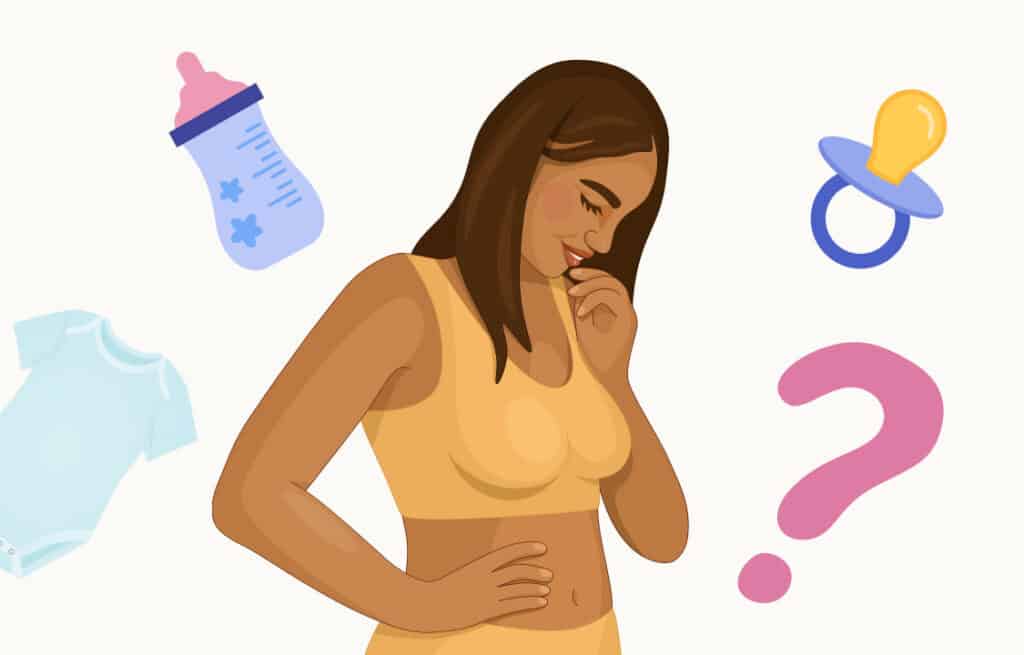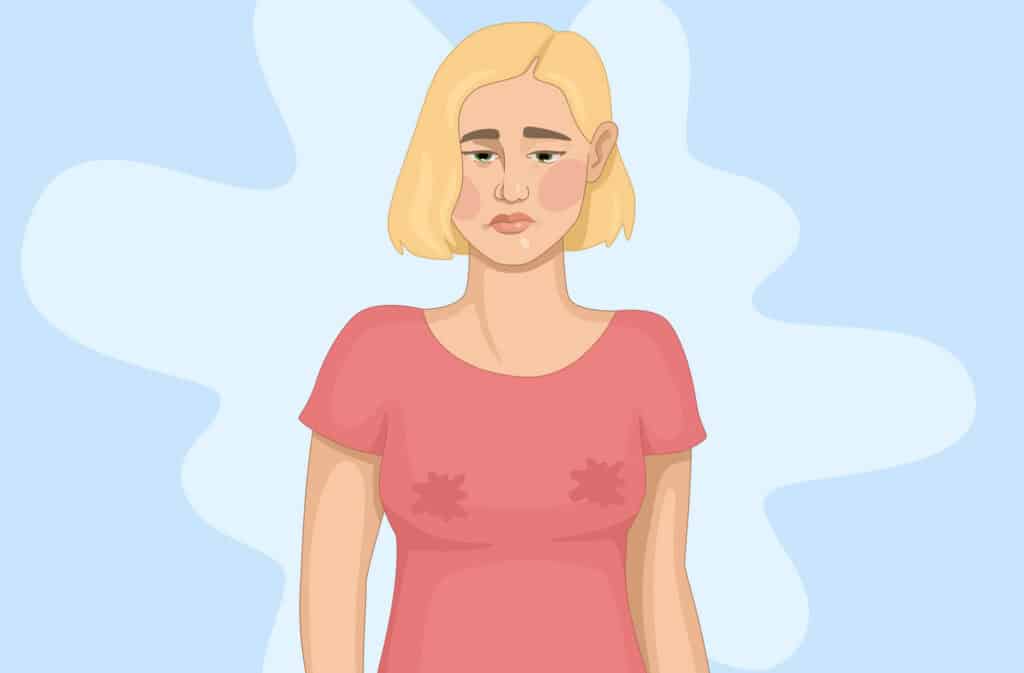Femia > Health Library > Your cycle > Health > Understanding the follicular phase: meaning, symptoms, and what to eat
Understanding the follicular phase: meaning, symptoms, and what to eat

- Updated Feb 11, 2025
- Published
CRAFTED BY HUMAN
Crafted by human At Femia, we provide accurate and up-to-date information at every stage of your journey, from trying to conceive, pregnancy and postnatal support. All content is created by a real person based on in-depth research and own professional experience. Femia ensures that you will receive expert advice, strict accuracy and a personalized approach from our authors/medical experts. Learn more about our editorial policy.
FACT CHECKED
Fact checked At Femia Health, we maintain the highest standards of editorial excellence in delivering content focused on helping you conceive, guiding you through pregnancy, and supporting you postpartum. Explore our content review principles to learn how we ensure the accuracy and quality of our health and lifestyle tips for every stage of your journey.
The follicular phase is the first phase of your menstrual cycle. It includes your period and lasts until ovulation. During this phase, your body prepares an egg for ovulation release. To ensure optimal hormonal balance during this phase, you should eat fresh vegetables, fermented foods, lean proteins, and healthy fats.
The follicular phase is the longest phase of your menstrual cycle. It begins on the first day of your cycle, with the arrival of your period, and lasts until ovulation. During your period, estrogen levels slowly rise, gaining momentum in the mid-follicular phase. Estrogen levels peak a few days before ovulation.
The follicular phase includes two different stages: menstruation and the mid to late follicular phase. You will likely experience two different sets of symptoms during the follicular phase, meaning symptom tracking can identify where you are in this phase.
body's fertility signs?
Femia helps millions of women track their discharge and ovulation
The three phases of the menstrual cycle
There are three distinct phases to the menstrual cycle:
- The follicular phase: During menstruation, you shed your endometrium (the lining of your uterus). After your period, your ovaries prepare an egg for release.
- The ovulation phase: During ovulation, an ovary releases an egg, which makes its way down the fallopian tube and towards your uterus.
- The luteal phase: During this phase, progesterone helps to prepare the body for pregnancy by thickening your uterine lining. If pregnancy doesn’t occur, you will soon be back at the start of your cycle on day one of your period.
What is the follicular phase?
The follicular phase begins on the first day of your period and lasts up to the ovulation phase, which may happen around day 14 in a standard 28-day cycle. Even if your period arrives like clockwork each month, you may not ovulate on the same day each cycle. The first part of the follicular phase coincides with menstruation. Once menstrual phase is over, the follicular phase continues until the ovulation phase.
What happens in your body during the follicular phase?
One of the key hormonal changes during the follicular phase is your rising estrogen levels. Estrogen increases during menstruation until a couple of days before ovulation. The ovaries make estrogen, which stimulates the thickening of the uterine lining in preparation for pregnancy.
Your body produces Follicle Stimulating Hormone (FSH) during this phase, so your ovaries start producing follicles to mature an egg for release. The dominant follicle produces more estrogen to thicken the uterus lining in preparation for ovulation. By the end of the follicular phase, high estrogen levels trigger a surge in Luteinizing Hormone (LH), which triggers ovulation.
👉Find out more: Can you get pregnant without a period?
How long is the follicular phase?
The follicular phase begins on the first day of your period and ends with ovulation. In a 28-day-cycle, the follicular phase would last around 14 days. However, not everybody has a 28-day cycle. In fact, anything from 21 to 35 days is considered normal. It’s worth noting that your cycle length may differ between cycles, which can make it difficult to predict where you are in your cycle.
Follicular phase symptoms: What to expect

Once you start tracking your symptoms throughout your cycle, you may notice that your symptoms vary throughout your cycle. The follicular phase begins with your period. Follicular phase symptoms include:
- Fatigue
- Cramping
- Bloating
- Mood swings
After your period, you enter the mid to late follicular phase, where you may notice an improvement in your symptoms thanks to rising estrogen levels. Here, your symptoms might include:
- Increased energy
- Improved mood
- Clearer skin
You may also notice changes in your cervical discharge around this time. Follicular phase discharge becomes thinner and clearer as ovulation approaches. You will also notice your vaginal discharge becoming slippery as you reach ovulation. The cervical mucus of ovulation is nicknamed egg white mucus because the slippery, stretchy, clear appearance is similar to egg white.
Follicular phase mood: Why you feel different
Estrogen levels are rising during the follicular phase, so you’ll enjoy some of the benefits of this hormone. You might notice increased energy, better cognitive function, and improved mood during this phase in your cycle.
The mental clarity, increased concentration, and creativity associated with this phase mean it’s the ideal time to plan some work deadlines. You might find you’re particularly productive at work during the follicular phase.
What to eat during the follicular phase: Optimizing your diet
Tracking your cycles allows you to eat food to complement your menstrual cycle. Try to include the following follicular phase foods in your diet:
- Lean proteins such as fish, chicken, tofu, and legumes
- Healthy fats, including avocado, olive oil, and chia seeds
- Fresh fruits such as raspberries, cherries, and grapefruit
- Fresh vegetables, including broccoli, zucchini, and kale
Foods high in phytoestrogens may help to boost estrogen levels, such as:
- Flaxseed
- Tempeh
- Peaches
- Garlic
Staying hydrated during the follicular phase is vital, especially during your period. You may notice an increase in symptoms associated with inflammation during your period, so it’s essential to include some antioxidants in your diet, such as:
- Berries
- Kidney beans
- Pecans
- Apples
👉Find out more: Cycle syncing: Optimize your lifestyle with your menstrual cycle phases
Sex during follicular phase: Libido and pleasure
Rising estrogen levels during the follicular phase can increase libido and arousal. Around 36 hours before ovulation, levels of the Luteinizing Hormone surge. A 2004 study published in the Journal of Sex Research found that women’s sexual motivation increased in the days leading up to this surge.
Changes in cervical mucus throughout your cycle can impact your sex life. During ovulation and in the days leading up to it, cervical mucus becomes wet and slippery to help sperm reach the egg more easily. The amount of cervical mucus increases in the late follicular phase, increasing arousal and boosting libido.
@femia.fertility What happens to your libido after ovulation? #ovulation #fertilewindow #fertility #fertilityjourney #wantababy #ttc #ttcjourney #ttcmeme #ttchumour #capcutmeme #fertilitytracker #libido #ovulationsymptom ♬ original sound - Femia fertility app
Schedule quality time during your follicular phase
A 2013 study published in Human Nature found that women place more emphasis on the importance of kissing during the late follicular phase, suggesting a desire for intimacy as ovulation approaches. Schedule some quality time with your partner to optimize intimacy during this phase. Life can get busy, but make sure you make time for each other during this phase of your cycle.
Can you get pregnant during the follicular phase?
Yes, it is possible to get pregnant during the follicular phase of your cycle. It is unlikely you’ll get pregnant during your period, but the end of the follicular stage is risky.
An egg is released on the day of ovulation and can survive for up to 24 hours. However, sperm can survive inside your body for up to five days, awaiting the release of the egg, which means unprotected sex during this time can lead to pregnancy.
You can track your cervical mucus to look for signs you might be entering your fertile window. Your cervical mucus changes throughout the month:
- Menstrual follicular phase – it’s hard to see at this point because of your period
- Early to mid follicular phase – dry and sticky
- Mid to late follicular phase – creamy, sticky, and thick
- Late follicular phase – clear and slippery
Keeping an eye on your cervical fluid allows you to track where you are in your cycle. This is helpful if you are trying for a baby because it will enable you to time when you have sex. If you don’t want a baby, tracking your cervical mucus gives you an idea of when to avoid having unprotected sex.
body's fertility signs?
Femia helps millions of women track their discharge and ovulation
How to check your cervical mucus
You should track your cervical mucus daily to build up a thorough understanding of your cycle. To check your cervical mucus, you have several options; you can:
- Wipe before you pee and inspect what you see on the tissue paper.
- Look in your underwear when you go to the toilet and inspect what you find.
- Insert a clean finger into the vagina and withdraw to inspect the findings. Ensure you wash your hands thoroughly before and after.
Questions from Femia community
Should I track the follicular phase for better fertility awareness?
Yes, tracking your menstrual cycle gives you better fertility awareness. Taking note of your symptoms throughout your cycle allows you to familiarize yourself with ovulation symptoms so you’ll know what to look for when trying to conceive.
Does exercising during the follicular phase improve performance?
Yes, the energy boost associated with the follicular phase can improve your workout performance. Many women find they can train harder during this time of their cycle. It’s the perfect time for weight training and high-intensity workouts.
What if my follicular phase is shorter or longer than average?
One of the great things about tracking your cycle is that it allows you to notice any change. While variations from cycle to cycle are normal and to be expected, significant changes could be a sign of a hormonal imbalance. If you are worried about changes in your menstrual cycle, speak to your OBGYN for advice.
A 2018 study published in Epidemiology found low Vitamin D levels were associated with longer cycles, so your OBGYN may want to check your levels. Shorter cycles are common as you approach menopause, but it’s worth speaking to your OBGYN to see if this is likely to be responsible for your cycle length.
The bottom line
During the follicular phase, your body sheds the old uterine lining and starts building a new one. Your ovaries prepare an egg for release at ovulation, and estrogen levels rise. In a 28-day cycle, the follicular phase can last around 14 days, though it could be longer or shorter than this, depending on the length of your cycles.
You should eat a balanced diet throughout your cycle to ensure proper nutrition. During the follicular phase, it’s important to eat healthy fats, fresh fruits and vegetables, lean protein, and antioxidants. Stay hydrated and ensure you are getting enough rest to protect your health.
Tracking your cycle allows you to notice changes in real-time. Familiarizing yourself with your cycles allows you to better understand your moods and health throughout the month. It will enable you to plan your life to get the most out of the natural ebbs and flows in energy, mood, and stamina that occur throughout your cycle.
References
- Bullivant, Susan B., et al. “Women’s Sexual Experience During the Menstrual Cycle: Identification of the Sexual Phase by Noninvasive Measurement of Luteinizing Hormone.” Journal of Sex Research, vol. 41, no. 1, 2004, pp. 82-93. doi:10.1080/00224490409552216. PubMed, https://pubmed.ncbi.nlm.nih.gov/15216427/.
- Jukic, Anne Marie Z., et al. “25-Hydroxyvitamin D and Long Menstrual Cycles in a Prospective Cohort Study.” Epidemiology, vol. 29, no. 3, 2018, pp. 388-396. doi:10.1097/EDE.0000000000000804. PubMed, https://pubmed.ncbi.nlm.nih.gov/29337846/.
- Monis, CN, and M. Tetrokalashvili. “Menstrual Cycle Proliferative and Follicular Phase.” StatPearls [Internet], StatPearls Publishing, 2024. https://www.ncbi.nlm.nih.gov/books/NBK542229/.
- Wlodarski, Rafael, and Robin I. M. Dunbar. “Menstrual Cycle Effects on Attitudes Toward Romantic Kissing.” Human Nature, vol. 24, no. 4, 2013, pp. 402-413. doi:10.1007/s12110-013-9176-x. PubMed Central, https://www.ncbi.nlm.nih.gov/pmc/articles/PMC4487819/.

Worried about not feeling pregnant in the first trimester? Learn why it’s normal to have no symptoms and what to expect during early pregnancy.

Learn how to lower prolactin levels naturally and with medical treatments to improve fertility. Discover causes, symptoms and practical tips to support conception.

Explore the causes and timing of fatigue during the first trimester of pregnancy, including when it peaks and how to manage it. Discover practical tips for coping with exhaustion during this challenging time.

